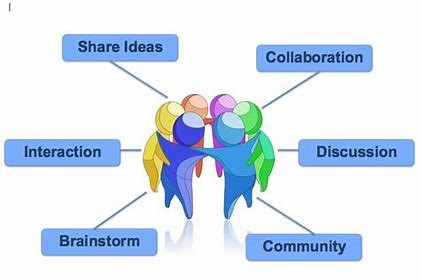I have been visiting classrooms and observing instruction since 2004 when I was an instructional coach. What I have learned is that the teachers who are successful with cooperative groups are the ones who plan for it, provide clear expectations on what cooperative interactions look like, systematically engage students in collaborative activities, and utilize reflection as a means to improve the practice and strategy of collaborative group work. Teachers proficient in the use of cooperative groups create vibrant classrooms that display students who are engaged in the learning process through collaboration, communication, and creation.
A. Plan for Cooperative Learning
How do you plan for cooperative learning? It is important to have students engage in cooperative learning at the right time in the lesson. When cooperative learning is one part of the overall lesson, it becomes a potent teaching and learning strategy. Teachers must visualize how a lesson will be executed because the best lessons are created through visualization. How will the particular lesson flow? What will the transitions look like? At what point, in the lesson, will cooperative groups take charge? Visualization is a powerful tool that will enable teachers to enact the lesson and plan for cooperative groups at the right time.
B. Provide Clear Expectations
What do interactions in cooperative groups look like? Cooperative interactions display appropriate communication skills, which include listening, asking clarifying questions, repeating, and responding. This type of active participation builds students’ language proficiency and strengthens their communication skills. Engaging in cooperative groups can be taught through modeling and role play. Additionally, by assigning roles to students, responsibilities become clear based on the job that each student is assigned. For example, cooperative groups can have a scribe, an illustrator, a reporter, and possibly a facilitator. Prior to taking on the job, ALL students must collaborate and communicate their plan for the assignment. What will they write? What illustration will the team decide to display? How will the reporting take place? A good strategy to ensure that students are engaged in this critical communication piece is to set a timer for x-number of minutes before allowing the scribe to record, the illustrator to illustrate, and so forth. Moreover, it is beneficial to provide time for the reporter to practice in the small group setting, prior to reporting out to the entire class.
C. Use Collaborative Groups Consistently
As the saying goes, practice makes perfect! When students engage in cooperative learning on a consistent basis, they become better at it. Teachers should ensure that cooperative learning groups occur consistently and that roles are switched around consistently. Assigning the reporter role to the best speaker does not allow others to have the opportunity to build or strengthen the skill of presenting to an audience. Teachers should not be concerned about the product at the beginning stages of cooperative learning; they should focus on the process instead. By focusing on and improving the process of cooperative learning, the product will eventually catch up. With enough practice, students’ collaborative learning products will increase in quality, because the collaborative process will become second nature.
D. Utilize Reflection as a Tool for Improvement
After every cooperative learning activity, teachers and students should take some time to reflect and respond to the following questions: what worked? And why? What didn’t work? And why? How did this learning activity relate to other experiences that I have had? What did I learn at that time? What did I learn now? What would I do differently next time? By reflecting as a class, learning can be solidified. New ideas can be explored and tested with each round. Each reflection session should be charted or documented. The new insights and learnings, borne out of the reflections, should be revisited before every cooperative learning activity.
So take the time to plan for cooperative learning, provide clear expectations on what cooperative interactions look like, systematically engage students in collaborative activities, and utilize reflection as a means to improve the practice and strategy of collaborative group work. Teachers who employ these four basic principles, discussed above, will most certainly create vibrant classrooms that empower students to directly engage in the learning process through collaboration, communication, and creation.


